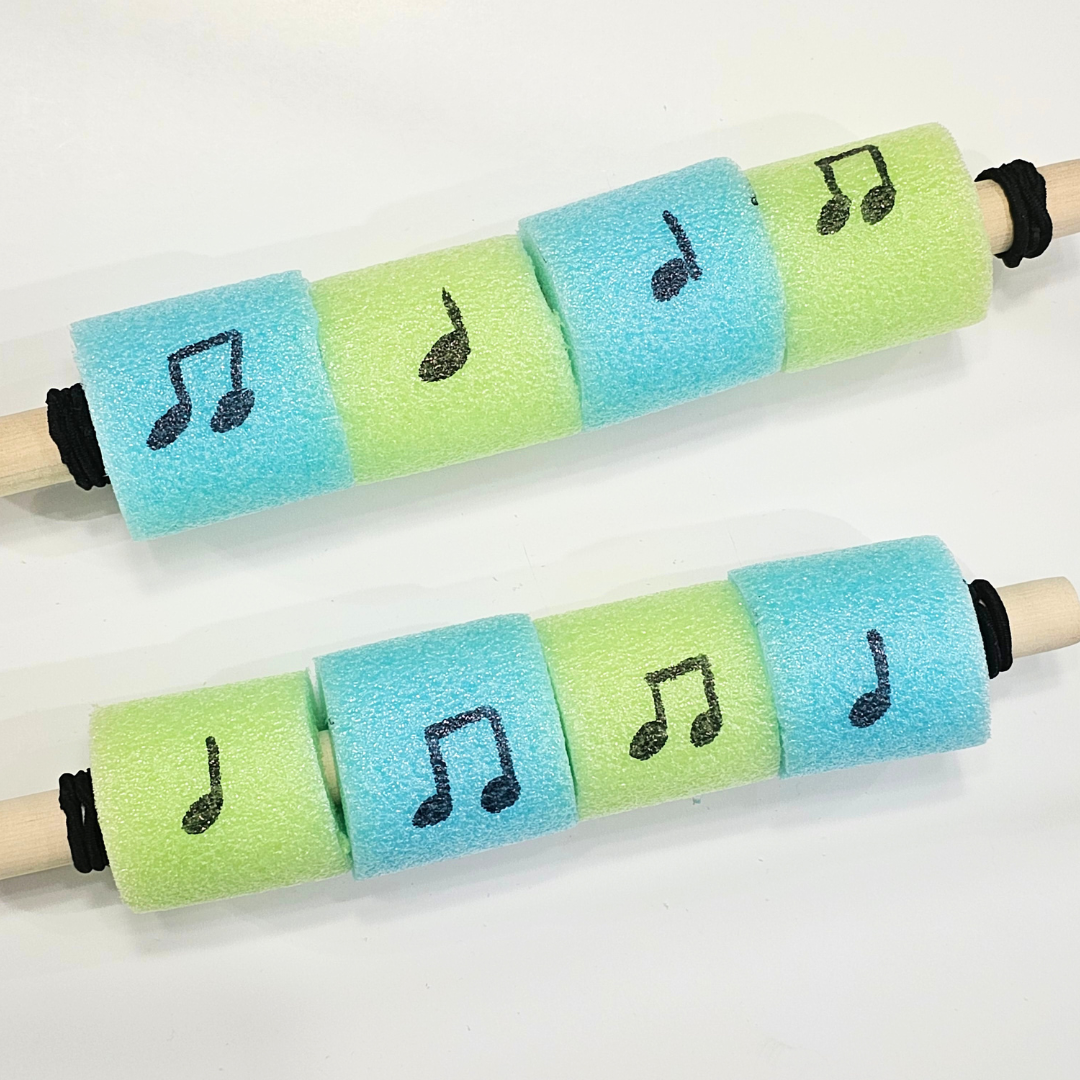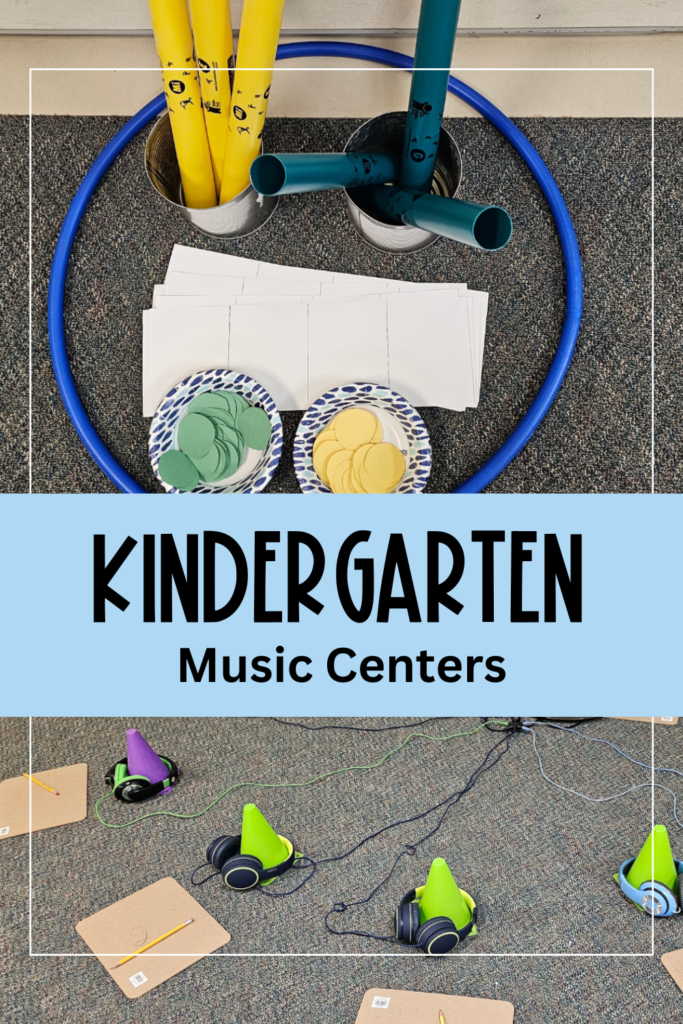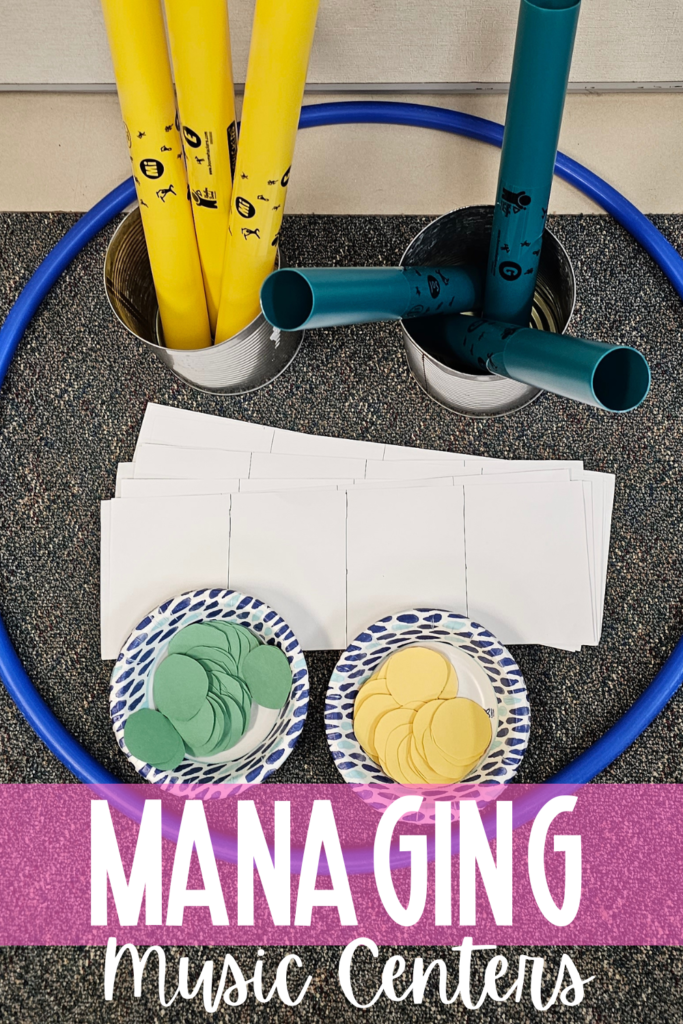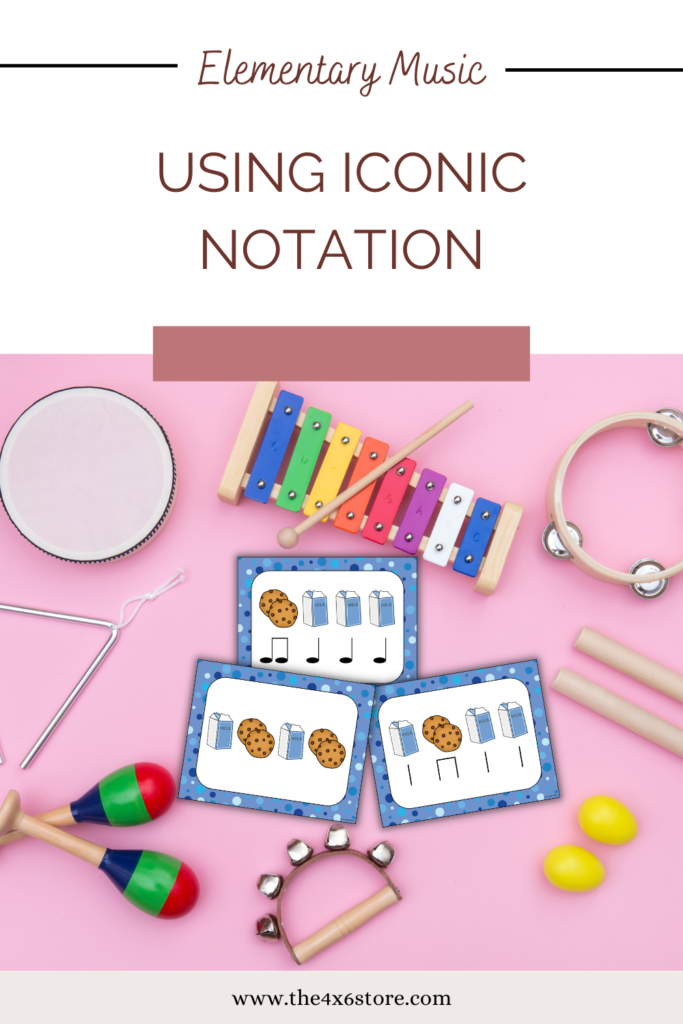DIY Pool Noodle Rhythm Spinners for the Elementary Music Classroom
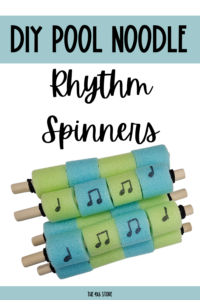
Connecting to every learning style in my music classroom is important. We know that students learn through play, as well! So I created these pool noodle rhythm spinners to my kindergarten centers. They are a very quick and easy DIY project – and did I mention CHEAP!? I made 12 spinners for less than a dollar each!
As an Amazon Associate I earn from qualifying purchases at no extra cost to you! All affiliate links will be marked with an *.
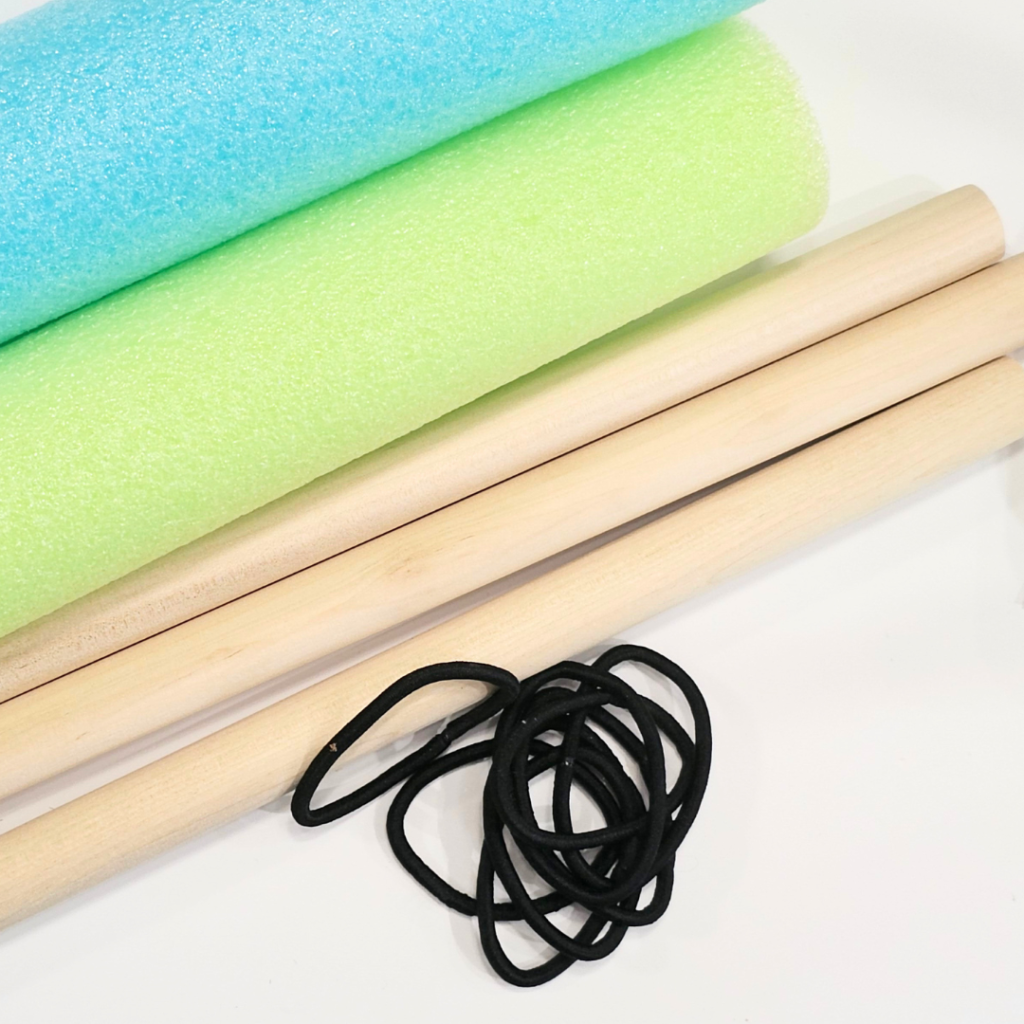
Supplies:
Wooden Dowels (precut or cut to 12-18 inches)
Pool Noodles
Hair Ties*
Knife (or scissors)
Sharpie
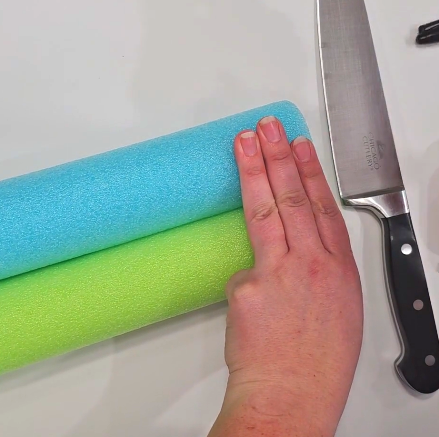
Step 1:
Determine how big your pieces need to be and how many you would like. For my dowels, three fingers was about right!
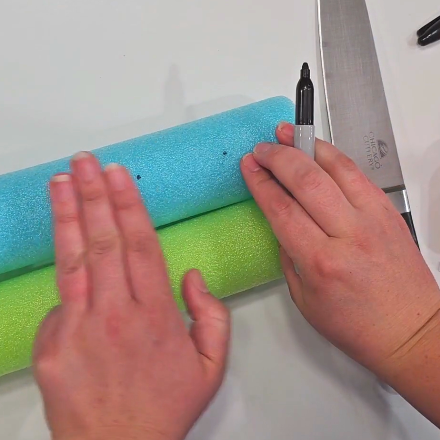
Step 2
Use your sharpie to draw small cutting lines. (If you cut quickly, you can wipe them off before they dry!)
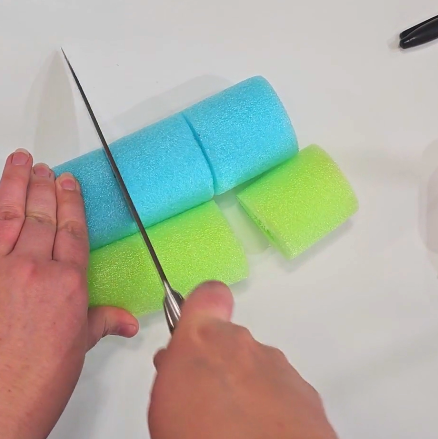
Step 3:
Use a knife to cut the pool noodles into equal sized pieces. I found that a knife worked much better than scissors. Scissors left them uneven and looking wonky.
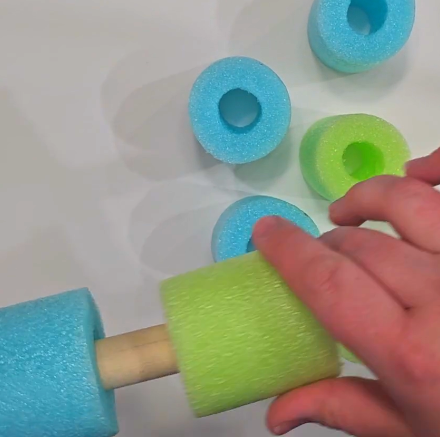
Step 4:
Place pool noodle pieces onto the dowel. I used a pattern to help separate each beat.
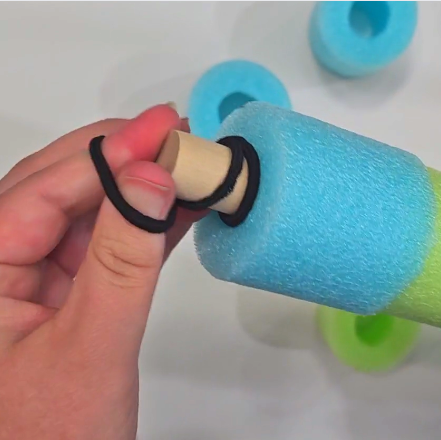
Step 5:
Secure each end with an extra thick ponytail holder. I found if I could get 4 loops, it was really hard for my kids to get them back off! I used this non-permanent option so I can change them out as needed!
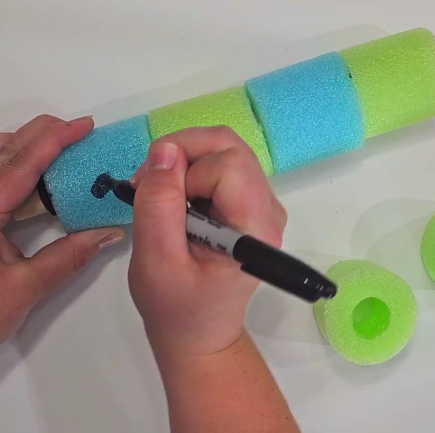
Step 6:
Draw the rhythms on with a permanent marker. *IMPORTANT* You must let it fully dry before touching it or doing the next side.
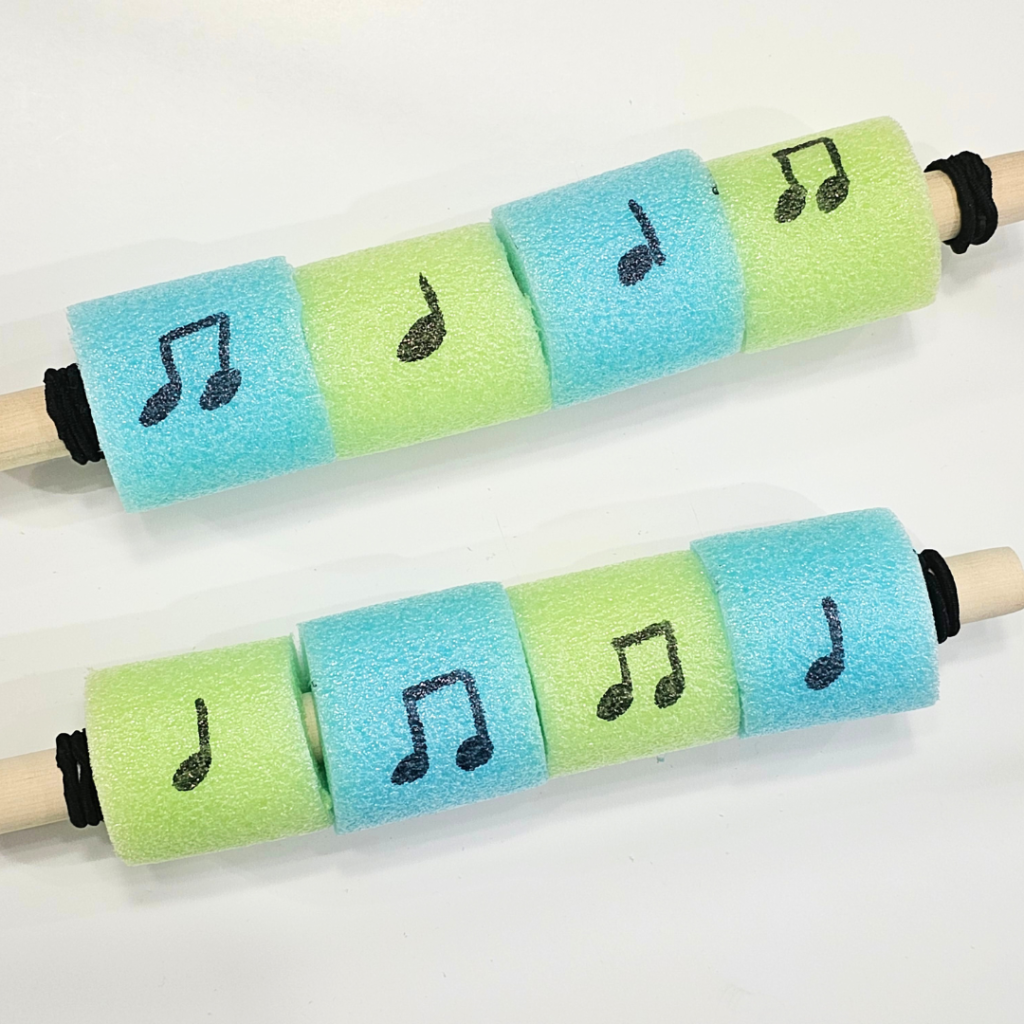
Step 7:
ENJOY!
I reminded my kids not to pull them off the ends. The dowel I used was close in size to the hole in the noodle, so it takes some strength to pull them off!
This fast, easy, and budget friendly rhythm center idea, pool noodle rhythm spinners are sure to be a classroom favorite! 🙂
Using in Your Classroom
I have used these in different ways in music centers. For my students that were ready for it, I had them use their iconic notation composition mats to create a pictorial rhythm first. Then, they used their rhythm spinners to create the notation for their rhythm.
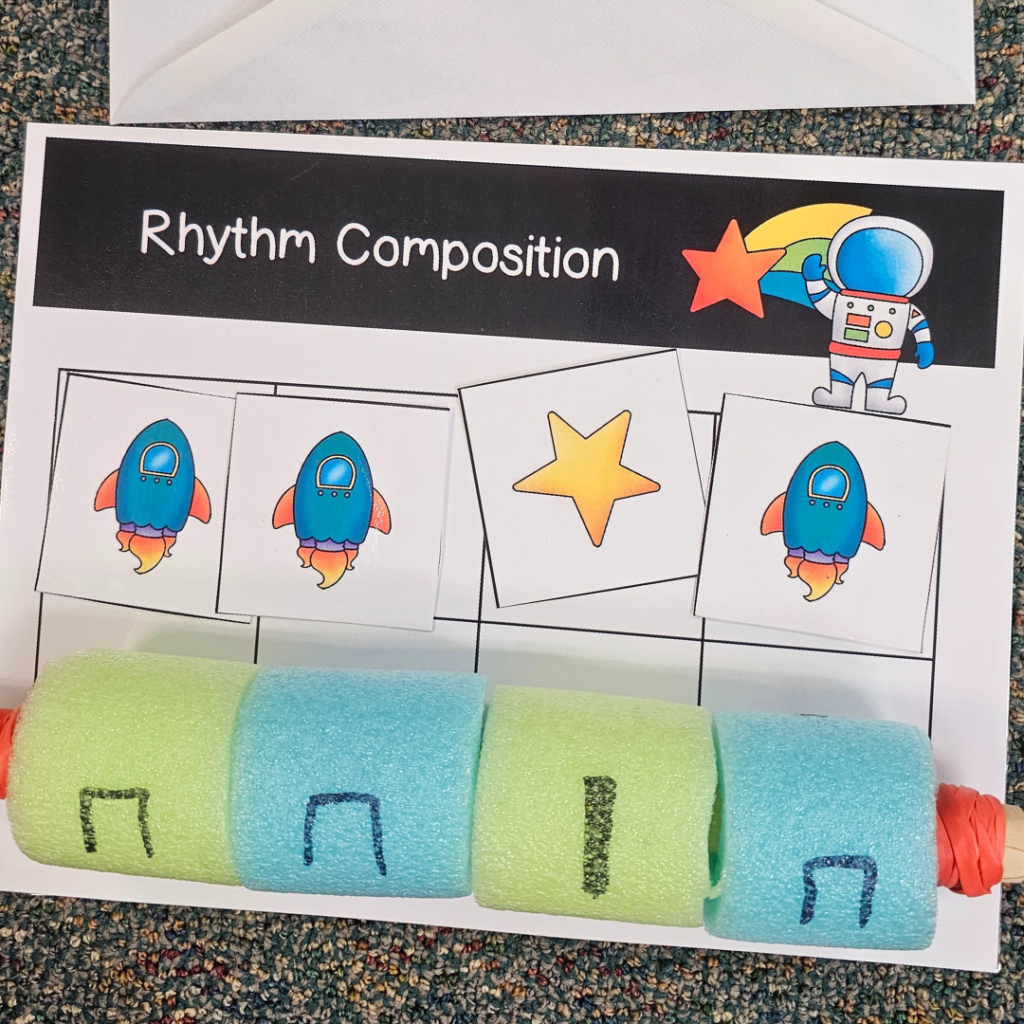
Another activity is to have students partner up and practice listening to and notation different rhythms. One student draws a rhythm card and claps or plays the rhythm (without the other partner seeing their card!) The other partner then has to use the rhythm spinner to create the right notation.

You May Also Enjoy…

